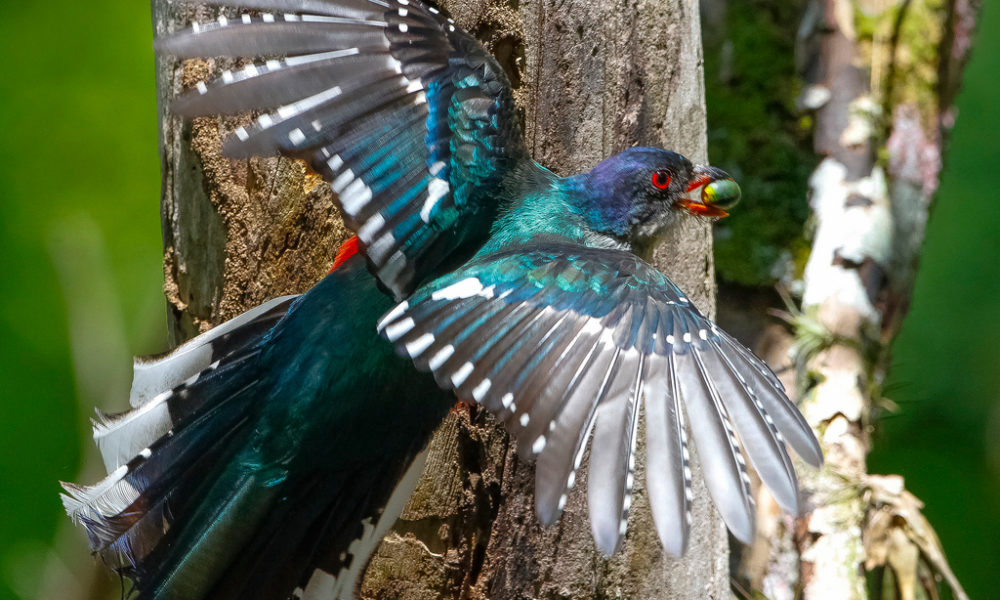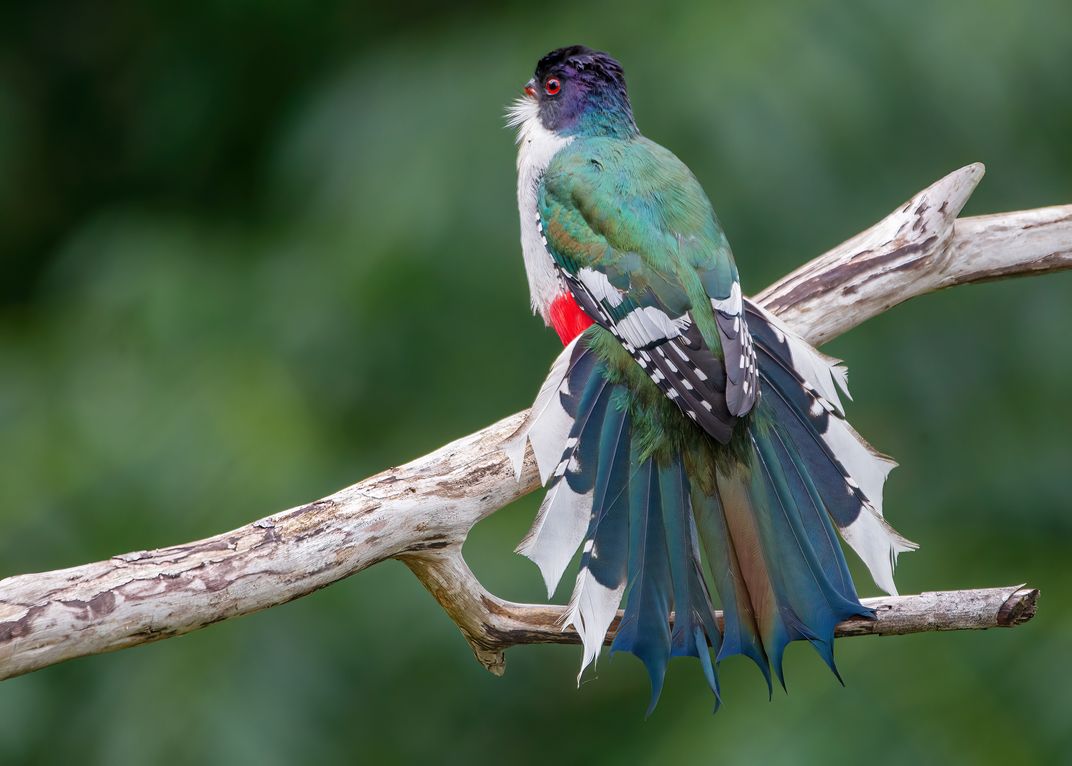The medium-sized bird called the Cuban Trogon, also known as Priotelus temnurus, belongs to the Trogonidae family and is found solely in Cuba. This bird is a beloved symbol of the island nation’s abundant biodiversity due to its stunning, colorful plumage. Its feathers feature a dazzling blend of iridescent green, crimson red, and pure white that creates an awe-inspiring spectacle for anyone fortunate enough to observe it.
The Trogon is a stunning avian species that not only captures the attention of bird enthusiasts with its beauty but also fascinates them with its evolutionary background. The indigenous Taino community in Cuba held the Trogon in high regard, considering it to be a holy messenger of their deities. The name Trogon has its roots in the Greek language, derived from the word “trogo” that signifies “to gnaw.” This term refers to the bird’s behavior of creating hollow spaces for nesting by excavating decaying trees.
The Cuban Trogon is a versatile bird that can be seen in different types of habitats, such as lowland forests, mountains, and even urban areas with lots of greenery. It prefers lush environments where it can find fruiting trees, as its diet mainly consists of fruits, berries, and insects. The bird’s bill has a distinct shape and serrated edges that enable it to consume its food sources effectively, making it an efficient forager.

During the breeding season, the Cuban Trogon puts on a mesmerizing show of courtship. Male birds display their stunning plumage and perform intricate aerial acrobatics while emitting enchanting calls to attract potential mates. After pairing up, the male and female work together to excavate a nest cavity in a decaying tree trunk with precision and dedication. It’s truly a remarkable sight to behold.

Efforts to conserve the Cuban Trogon and its natural habitat are crucial for its survival. The International Union for Conservation of Nature (IUCN) has classified this species as “near threatened” due to the loss of its habitat caused by deforestation and urbanization. Ensuring the protection of the lush forests that serve as its home is vital in preserving this magnificent bird for future generations to admire.



